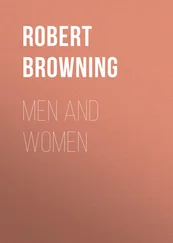John’s task was not easy. He had plenty of ideas for the design, but the inadequacies of the Browning machine shop meant that the weapon had to be as simple as he could make it. He started with basic sketches, then produced templates which he altered as ideas and modifications occurred to him, and finally he fabricated the metal parts. Larger components he hand-forged, shaping them on the anvil and trying to get them as near as possible to the final design to avoid the filing and chiselling that would otherwise be necessary. But there was no short-cut in making the receiver; it had to be forged, then drilled, chiselled and filed out: a tiresome and exhausting job. The gun that eventually emerged was a single-shot rifle, lever-action and with an exposed hammer. It was simple, robust and reliable.
It is generally accepted that most successful weapons have taken at least two and often three or more years to progress from the initial idea to the test-firing stage. The time John Browning took to design and construct his rifle is not precisely known, but it was almost certainly less than one year. It is known that he started working on the weapon after his twenty-third birthday on 23 January 1878, and filed an application for a patent on 12 May 1879, the month after he married Rachel Teresa Child.
The patent application itself was also signed by Jonathan Browning as a witness, and must have been filed quite some time after the gun was complete, because of John Browning’s complete lack of knowledge of patent procedure, blueprints and technical drawing, all of which necessitated considerable correspondence with the patent attorney in the east, and mail took a long time to get through. Perhaps the best evidence is the patent model itself, the barrel of which bears the inscription ‘J. M. BROWNING OGDEN U.T. 1878’.
What is perhaps even more staggering than the speed with which John produced this first rifle, even bearing in mind the limitations of the shop in which he was working, is the fact that he designed and produced a second gun during 1878 — another lever-action single-shot — though this weapon was not patented, and only one is known to survive.
Probably the biggest problem faced by John Browning at this time was not the design and making of a gun, but in patenting the finished weapon. No-one in Ogden had much idea what a patent was, far less how to apply for one, so John finally scrawled a note asking how he could patent a gun on an order form and sent it to Schoverling, Daly and Gales, a firm from which he had previously purchased supplies.
The result of this slightly unorthodox approach was the name of a patent attorney. A similar note was sent to him, and in due course John received a letter explaining the procedure and a copy of a patent application. After studying all the information to hand, John wrote out the design features that he thought were new and therefore patentable, and sent everything back to the patent attorney to be converted into correct legal language. And it worked, because the patent for the rifle, the Browning Single Shot, was granted on 7 October 1879, number 220,271.
Quite apart from the designing and patenting of this rifle, 1879 was a time of change for John Browning. After his marriage on 10 April 1879, a good deal of his time was spent in building a house for himself and his wife, and in constructing a new shop from which to conduct his business — all on a shoe-string budget. Just over two months later, on 21 June 1879, Jonathan Browning died peacefully. He had simply, John thought, died of weariness, but it was a source of great pleasure both to father and son that Jonathan had lived to see, and to fire, John’s single-shot rifle.
John had completely taken over the running of the Browning shop in 1878, and had done what he could to improve the business by increasing both the turnover and the prices charged, because Jonathan had always under-priced his work. He was initially assisted only by Matt, but had to enlist the services of his brother Ed (Jonathan Edmund) by the end of 1879. The arrangement worked extremely well, with Ed eventually becoming John’s model-maker.
Jonathan Browning had acted as a bespoke gunmaker, producing arms to order, but John’s vision of his future was rather different. The fact that he had designed and patented his own gun was common knowledge in Ogden and the surrounding area, and the weapon had already attracted considerable interest and, more importantly, several advance orders. Realizing the worth of the single-shot, John had decided to try to manufacture and sell it from a rudimentary production line, and had purchased the power tools he would need to achieve this for installation in his new shop in Ogden.
On the afternoon of their second day in the new shop, surrounded by a chaos of machinery, belts, packing cases and the entire contents of the old shop, as John and his brothers looked around wondering where to start, the door opened and an Englishman called Frank Rushton walked in. He was literally the right man in the right place at the right time. He was a gunsmith with years of experience and with a working knowledge of factory practices, and more importantly he was looking for work. Rushton brought his expertise to bear in getting the shop running smoothly, and then worked closely with John in training Matt and Ed in the intricacies of firearms manufacture. To the Brownings, he was invaluable, and he remained with the brothers for the rest of his life.
Contrary to the frequently-repeated story, John Browning did not refuse to sell any guns until he had produced six hundred models. In fact, he had decided to produce an initial run of twenty-five rifles, but he did not specify a production time-scale. He reasoned that making this number would enable him to work out the most effective routine for the shop, and would also be a sufficient training period for his brothers.
Three months were to elapse before the rifles were ready, but within a week every one had been sold and the Brownings had several unfilled orders. The price asked for the weapon was $25.00, but most sales realized rather more than this when the usual extras were added in — cover, powder, lead, primers and so on. John was pleased but not surprised, for he had expected to sell the initial production quickly to satisfy local demand, but contrary to his expectations the rifle continued to sell so well that they never subsequently held a stock of more than a dozen completed rifles in the shop.
Production was erratic at first, but eventually settled down at around two rifles a day, and the shop prospered as far as it was able. They began selling sporting goods as a side-line, and the usual rifle repair work continued to generate a reasonable income.
John, however, was already looking ahead, and on 20 March 1882 he filed a patent application for a repeating rifle with a tubular magazine, and this patent was granted in July of the same year. He did not attempt to produce this weapon, and instead filed a further patent on 13 September 1882 for another, and completely different, lever-action repeater fitted with a tubular magazine, which he again did not produce. He seems to have regarded these two designs as preliminary stages leading to the creation of what was to become the Model 86 Winchester.
This was a difficult time for John, because although business was good, the shop was taking up more and more of his working day, and he had precious little time to spare for new designs and he was a weapon designer at heart.
But in 1883 everything changed.
5. THE WINCHESTER CONNECTION
Andrew McAusland was a salesman for the Winchester Repeating Arms Company, and in 1883 he bought an unfamiliar second-hand single-shot rifle for the sum of fifteen dollars. The barrel bore the legend ‘BROWNING BROS. OGDEN, UTAH U.S.A.’, and the receiver was stamped with the number 463. McAusland clearly recognized the potential of the weapon, for he forwarded it to the Winchester factory where it was passed to the Vice President and General Manager, T G Bennett, who was immediately struck by the quality of the rifle and its sophisticated design.
Читать дальше












